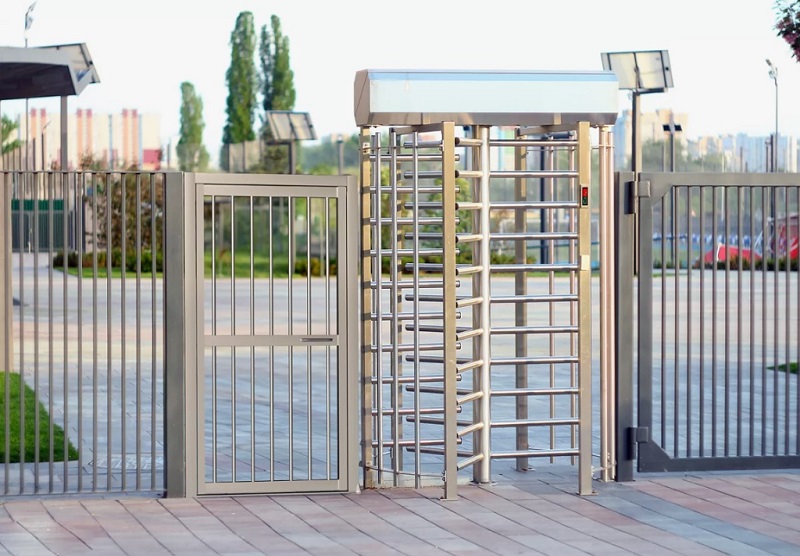
Did you know turnstile gates have been in existence for centuries? They were initially designed for a simple yet crucial purpose - regulating access and maintaining order. But how has the humble turnstile gate adapted throughout the years to suit our changing needs and demands? How has the technology improved and can we expect a greater leap in the future? Are you thrilled about the thought of a simple aesthetic swing gate at the entrance of your architectural marvel? Well, it's time we delve into the world of modern turnstile gates, exploring the advancements in technology and the integration of design and functionality.
As we walk through cities and private establishments, turnstile gates are omnipresent, quietly directing flow and maintaining security. Yet, we rarely give a thought to the intricate design and innovation built into these ubiquitous structures. From carbon-fiber construction to biometric integrations, the once simple, utilitarian structures have become works of art, blending phenomenal engineering and impeccable aesthetics.
This blog post aims to shed light on the intuitive designs and innovative updates of modern turnstile gates. We will travel the path of evolution from strictly functional to form meeting function, and explore how these contemporary gates have incorporated advanced technology to augment their operational efficiency while simultaneously elevating their aesthetic appeal.
Understanding The Why And What Of Turnstile Gates Evolution
Stepping back into the timeline, turnstile gates were primarily designed to control pedestrian traffic and enhance security. Yet, as our society developed, so did the role and requirements of these gates. Curious to know why?
It all started with growing urban populations and the need for enhanced crowd management. Turnstile gates not only needed to perform their conventional roles but also had to adapt to growing security concerns. Consequently, the technological development also followed.
Modern turnstile gates come equipped with fascinating features like facial recognition and contactless card access, which were unthinkable a few decades back. From standalone gates to networked systems, the technological evolution of these gates has been nothing short of incredible.
Shaping Aesthetics: The Art Of Modern Turnstile Gates
While we have made impressive advancements in terms of functionality, we cannot deny the fact that aesthetics have been equally important. A beautifully designed turnstile gate may not attract the same level of attention as a monumental sculpture, but it unquestionably holds the power to complement the overall look and feel of an architectural creation.
Today, we see a perfect blend of form and function, with designers focusing on creating turnstile gates that enhance their surroundings. It's not just about functionality anymore–space aesthetics equally matters.
From minimalist designs to elaborate structures, modern turnstile gates don't just regulate access; they add immense aesthetic value to the environment, seamlessly integrating with architecture and contributing to making the spaces more inviting.
Leveraging Technology: The Future Of Turnstile Gates
The traditional concept of using a key or a card to access the gate has now been replaced with biometrics and facial recognition, something that we associate more with sci-fi movies rather than real life. But, is this the end or just the beginning of an exciting journey?
Future turnstile gates might leverage predictive technology to further streamline traffic control, using advanced sensors and AI. With the advent of smart cities, we could potentially see turnstile gates communicating with each other, to provide an even more organized and seamless experience for the users.
Pros And Cons: Weighing Modern Turnstile Gates
Like everything else, modern turnstile gates come with their set of unique advantages and challenges. The primary advantage, of course, is the enhanced security coupled with improved aesthetics.
However, the increasing reliance on technology can turn out to be a double-edged sword. It brings up questions of data security and privacy concerns, especially in relation to systems that employ biometrics. Moreover, the costs of implementing and maintaining these systems can run high.
The Perception: Acceptance And Rejection
Modern turnstile gates are typically perceived as a symbol of security and exclusivity. In high-end establishments, they can be seen as an element of prestige. However, in public spaces, the perception often leans towards the divide–who's allowed and who's not. Balancing these perceptions remains a challenge.
Conclusion
Turnstile gates have indeed come a long way from being mere restricting barriers. We've seen them mutate from purely utilitarian objects to aesthetically pleasing installations with impeccable functionality. And despite a few challenges, the advancements continue to flourish, weaving technology and design seamlessly to overhaul the traditional perception associated with these gates.
These advancements in turnstile gate technology and design echo the astonishing measure of our time, reflecting our society's focus on security, efficiency, and design excellence. The future developments in this field are bound to be as exciting as they are ingenious, making turnstile gates an essential element of modern architecture and design.







.jpg)